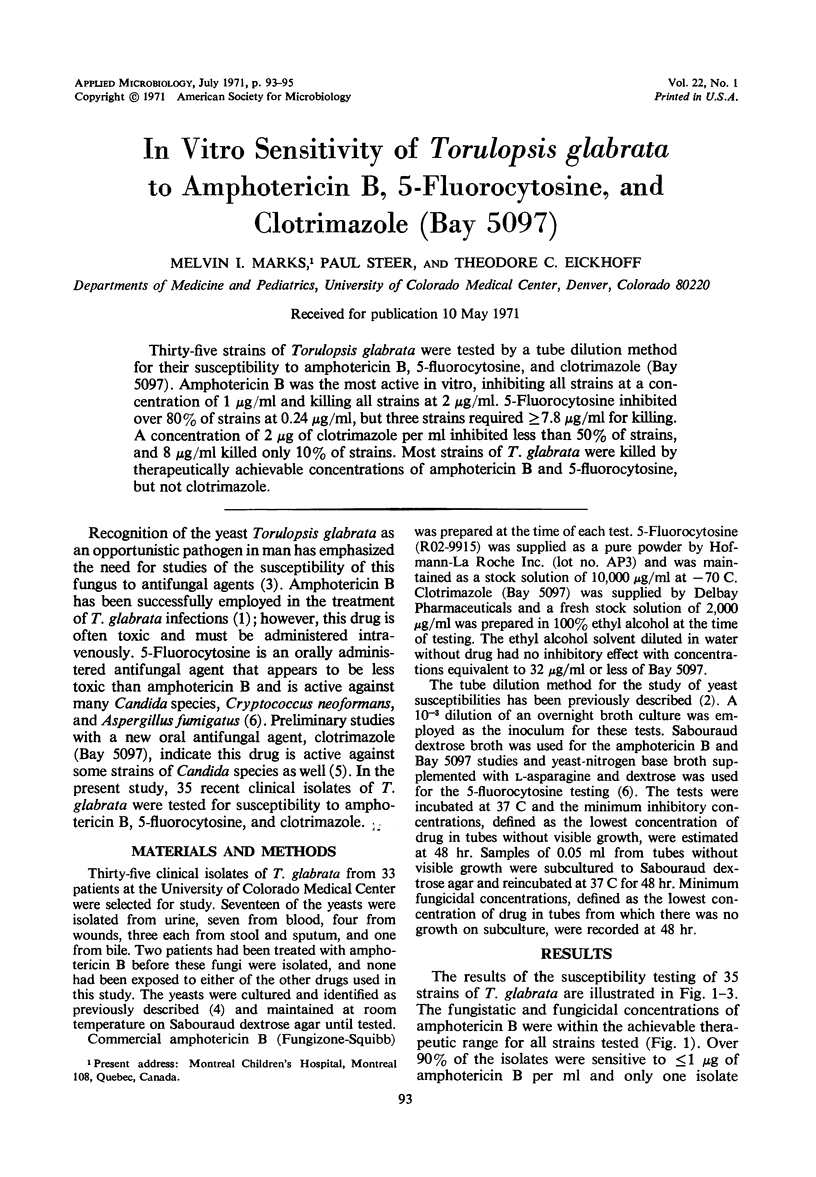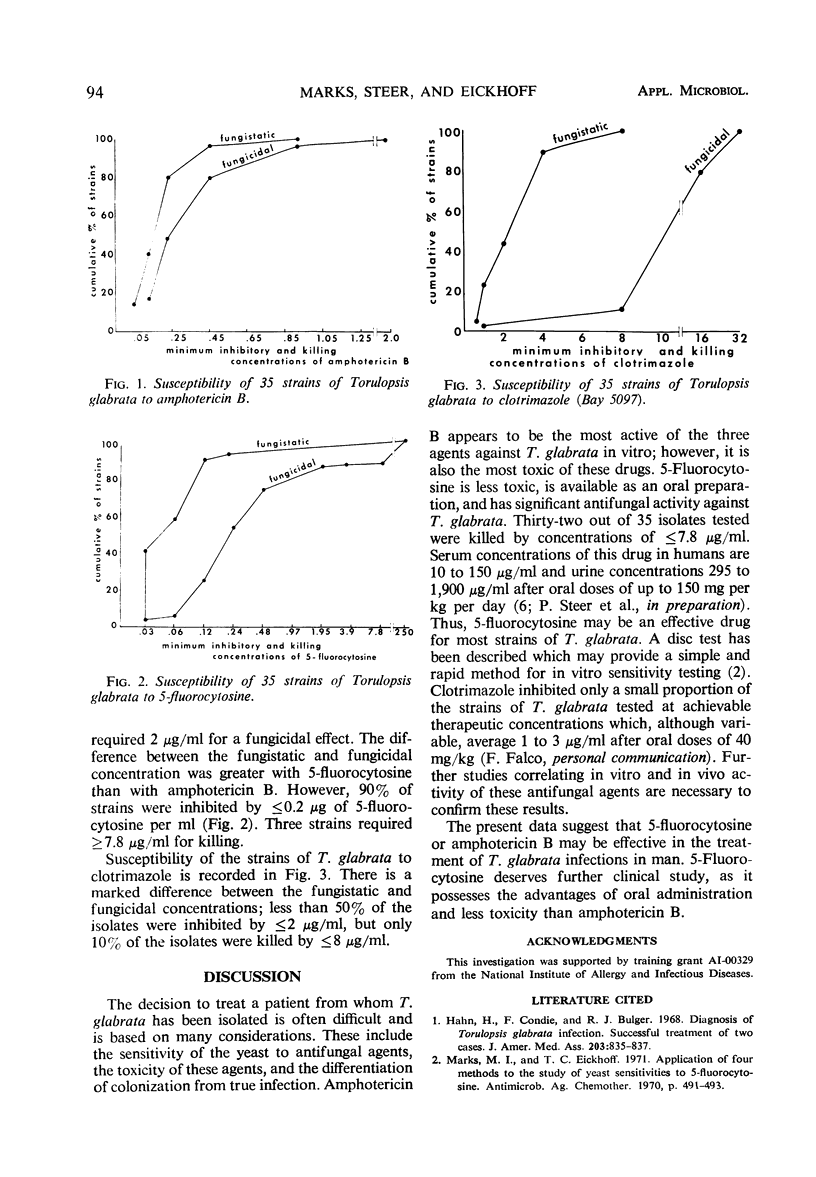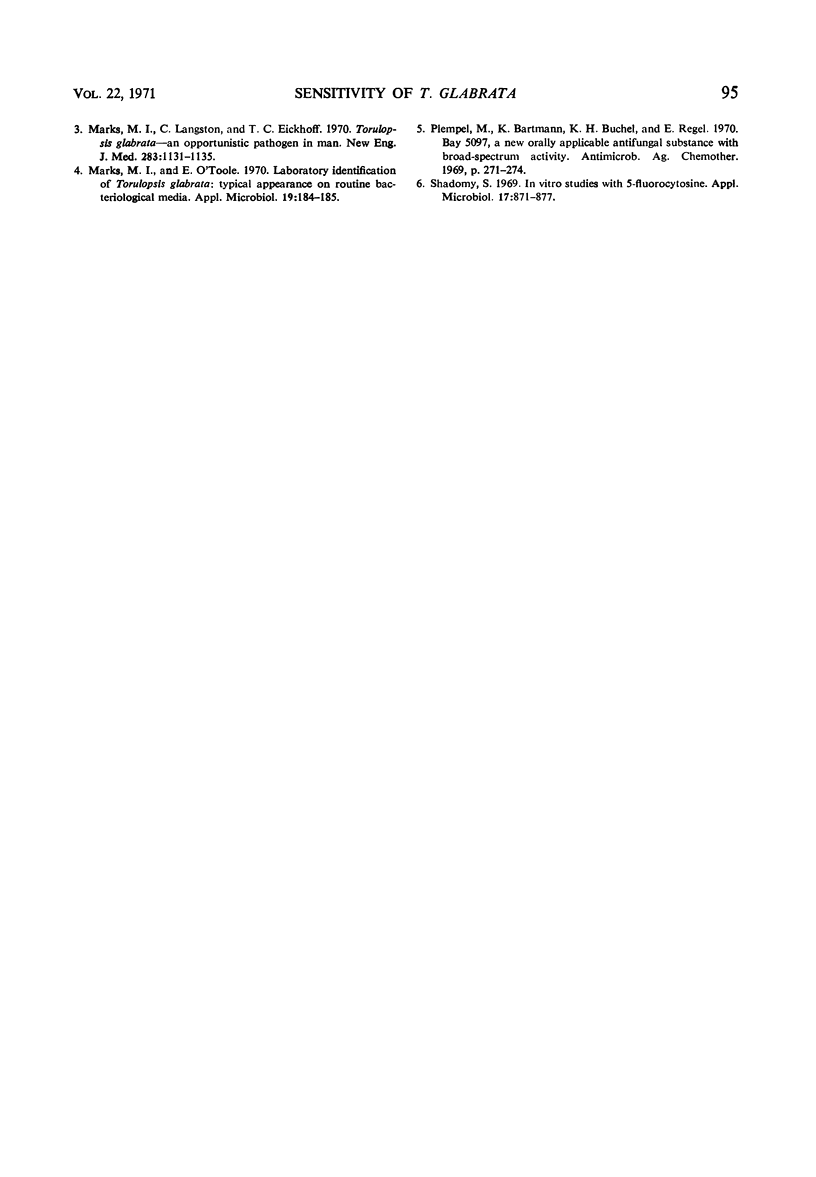Abstract
Thirty-five strains of Torulopsis glabrata were tested by a tube dilution method for their susceptibility to amphotericin B, 5-fluorocytosine, and clotrimazole (Bay 5097). Amphotericin B was the most active in vitro, inhibiting all strains at a concentration of 1 μg/ml and killing all strains at 2 μg/ml. 5-Fluorocytosine inhibited over 80% of strains at 0.24 μg/ml, but three strains required ≥7.8 μg/ml for killing. A concentration of 2 μg of clotrimazole per ml inhibited less than 50% of strains, and 8 μg/ml killed only 10% of strains. Most strains of T. glabrata were killed by therapeutically achievable concentrations of amphotericin B and 5-fluorocytosine, but not clotrimazole.
Full text
PDF


Selected References
These references are in PubMed. This may not be the complete list of references from this article.
- Hahn H., Condie F., Bulger R. J. Diagnosis of Torulopsis glabrata infection. Successful treatment of two cases. JAMA. 1968 Mar 4;203(10):835–837. [PubMed] [Google Scholar]
- Marks M. I., Eickhoff T. C. Application of four methods to the study of the susceptibility of yeast to 5-fluorocytosine. Antimicrob Agents Chemother (Bethesda) 1970;10:491–493. [PubMed] [Google Scholar]
- Marks M. I., O'Toole E. Laboratory identification of Torulopsis glabrata: typical appearance on routine bacteriological media. Appl Microbiol. 1970 Jan;19(1):184–185. doi: 10.1128/am.19.1.184-185.1970. [DOI] [PMC free article] [PubMed] [Google Scholar]
- Plempel M., Bartmann K., Büchel K. H., Regel E. BAY b 5097, a new orally applicable antifungal substance with broad-spectrum activity. Antimicrob Agents Chemother (Bethesda) 1969;9:271–274. [PubMed] [Google Scholar]
- Shadomy S. In vitro studies with 5-fluorocytosine. Appl Microbiol. 1969 Jun;17(6):871–877. doi: 10.1128/am.17.6.871-877.1969. [DOI] [PMC free article] [PubMed] [Google Scholar]


